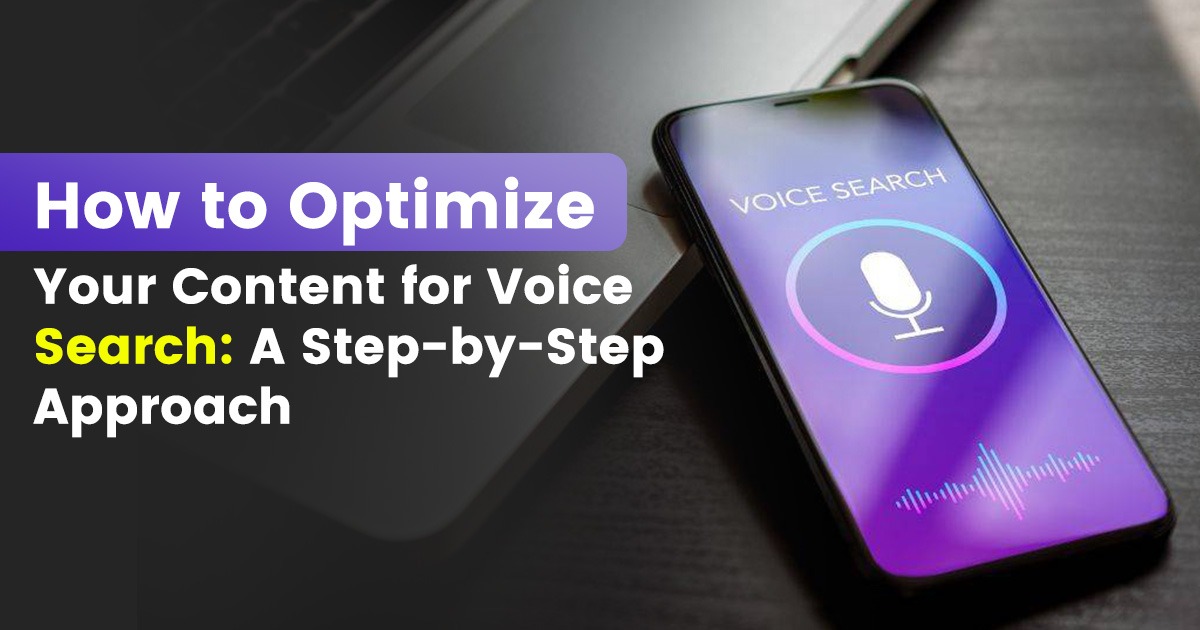How to Optimize Your Content for voice Search
How to Optimize Your Content for voice Search: A Step-by-Step Approach
Voice search is transforming the way people interact with technology and access information. With the rise of smart speakers, virtual assistants, and mobile voice search, optimizing your content for voice search has become essential for staying competitive in the digital landscape. Voice Search Optimization, this blog post will provide a comprehensive, step-by-step approach to optimizing your content for voice search.
Step 1: Understand the Nature of Voice Search
Voice search queries differ from traditional text searches. They tend to be longer and more conversational. Instead of typing “best pizza near me,” a user might ask, “Where can I find the best pizza place near me?” This difference necessitates a shift in keyword strategy from short, concise keywords to long-tail keywords and natural language phrases.
Step 2: Use Long-Tail Keywords and Natural Language
To optimize for voice search, incorporate long-tail keywords and natural language phrases into your content. These keywords reflect how people naturally speak. Tools like Google’s Keyword Planner and AnswerThePublic can help identify relevant long-tail keywords. For example, instead of targeting “pizza restaurant,” consider phrases like “where can I find the best pizza restaurant in New York?”
Step 3: Optimize for Questions
Voice searches often come in the form of questions. Users ask their virtual assistants questions like “How do I optimize my website for voice search?” To capture this traffic, your content should answer these questions directly. Start by researching common questions in your niche. Websites like Quora, Reddit, and FAQ sections of competitors can provide insights into what questions your audience is asking.
Step 4: Create FAQ Pages
One effective way to address voice search queries is by creating FAQ pages. These pages can house a variety of questions and answers related to your industry. Ensure each question is phrased in a conversational manner, and the answers are clear and concise. FAQ pages not only improve your chances of appearing in voice search results but also enhance user experience.
Step 5: Optimize for Local SEO
A significant portion of voice searches is local. Users often seek information about nearby businesses, services, or attractions. To optimize for local voice search, ensure your Google My Business listing is up-to-date and accurate. Include essential details such as your business name, address, phone number, and operating hours. Additionally, incorporate local keywords into your content, such as the name of your city or neighborhood.

Step 6: Improve Page Speed
Voice search users expect quick answers, so page speed is crucial. Slow-loading pages can negatively impact your search rankings and user experience. Use tools like Google PageSpeed Insights to identify areas for improvement. Optimize images, leverage browser caching, and minimize CSS and JavaScript files to enhance page speed.
Step 7: Ensure Mobile-Friendliness
Most voice searches occur on mobile devices, so having a mobile-friendly website is imperative. Ensure your website is responsive and provides a seamless experience across all devices. Google’s Mobile-Friendly Test tool can help you identify and fix any mobile usability issues.
Step 8: Use Structured Data Markup
Structured data markup helps search engines understand the content of your pages better. This markup can enhance your chances of appearing in rich snippets, which are often used in voice search results. Implement schema.org markup to provide search engines with detailed information about your content. This could include reviews, ratings, business hours, and more.
Step 9: Focus on Featured Snippets
Featured snippets are concise answers to search queries displayed at the top of Google’s search results. They are often used for voice search responses. To optimize for featured snippets, provide clear, concise answers to common questions within your content. Use bullet points, numbered lists, and tables to make your content easy to read and understand.
Step 10: Produce High-Quality, Engaging Content
Ultimately, the quality of your content matters most. High-quality, engaging content that provides value to your audience will naturally perform better in search results, including voice search. Focus on creating comprehensive, informative, and well-structured content that addresses the needs and interests of your audience.
Optimizing your content for voice search requires a strategic approach that focuses on natural language, long-tail keywords, and user intent. By understanding the unique characteristics of voice search and implementing these steps, you can enhance your content’s visibility and relevance in the evolving digital landscape. Stay proactive, monitor your results, and continuously refine your strategy to keep up with the dynamic world of voice search.

 Previous Post
Previous Post Next Post
Next Post